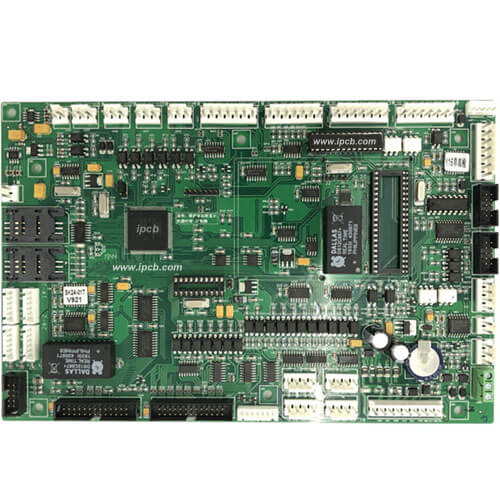PCB is a widely used product, which can be used in all electronic and electrical equipment, such as mobile phone, computer, automobile, display screen, air conditioner, remote control and so on. Today, I will talk about the basic rules of component wiring and layout in PCB board, which can be used for reference by those who are new to PCB design industry.
1. Components wiring rules (components refer to components on the circuit board)
1. Draw the wiring area within the area ≤1mm from the PCB board edge, and within 1mm around the mounting hole, forbid wiring;
2. The power cord should be as wide as possible, not less than 18mil; Signal line width should not be less than 12mil; CPU incoming and outgoing lines should not be less than 10mil(or 8mil); Line spacing not less than 10mil;
3. Normal through hole is not less than 30mil;
4. Double line insert: pad 60mil, aperture 40mil;
1/4W resistance: 51*55mil(0805 sheet); Direct insert pad 62mil, aperture 42mil;
Non-polar capacitor: 51*55mil(0805 sheet); Direct insert pad 50mil, aperture 28mil;
5. Ensure that the power cables and ground cables are radiated as far as possible, and the signal cables cannot be looped back.

Basic rules of component layout
1. According to the layout of circuit modules, the related circuit to achieve the same function is called a module, the components in the circuit module should adopt the principle of nearby concentration, and the digital circuit and analog circuit should be separated;
2. Components, devices and screws shall not be installed within 3.5mm(for M2.5) and 4mm(for M3) around the non-mounting holes such as positioning holes and standard holes within 1.27mm;
3. Horizontal resistance, inductor (plug-in), electrolytic capacitor and other components under the cloth hole, so as to avoid the wave soldering hole and component shell short circuit;
4. The outer part of the component is 5mm away from the edge of the plate;
5. The distance between the outer side of the mounting element and the outer side of the adjacent inserting element is greater than 2mm;
6. Metal shell components and metal parts (shielding boxes, etc.) can not touch other components, can not be close to the printed line, pad, the spacing should be greater than 2mm. The size of positioning holes, fastener mounting holes, elliptic holes and other square holes in the plate is greater than 3mm from the plate side;
7. Heating elements should not be close to wires and thermal elements; High-heat devices should be evenly distributed;
8. The power socket should be arranged around the printed circuit board as far as possible, and the wiring terminal of the power socket and the busbar connected to it should be arranged on the same side. Special care should be taken not to place power sockets and other welding connectors between connectors to facilitate the welding of these sockets and connectors and the design and tying of power cables. The spacing of power sockets and welding connectors should be considered to facilitate the insertion and removal of power plugs;
9. Layout of other components:
All IC components should be aligned unilaterally, and polarity marks of polar components should be clear. Polarity marks on the same printed board should not be more than two directions. When two directions appear, the two directions should be perpendicular to each other.
10. The surface wiring should be properly dense, when the density difference is too large should be filled with mesh copper foil, the grid is greater than 8mil(or 0.2mm);
11. There should be no through hole on the patch pad to avoid the loss of solder paste resulting in virtual welding of components. Important signal line is not allowed to pass through the socket foot;
12. Patch unilateral alignment, consistent character direction, consistent packaging direction;
13. Devices with polarity should be marked in the same direction on the same board.
About the basic rules of PCB wiring can refer to the above content, of course, have their own views of the designer is better, single-layer board wiring is relatively simple, multi-layer board is much more complex, more exploration and learning to better design!